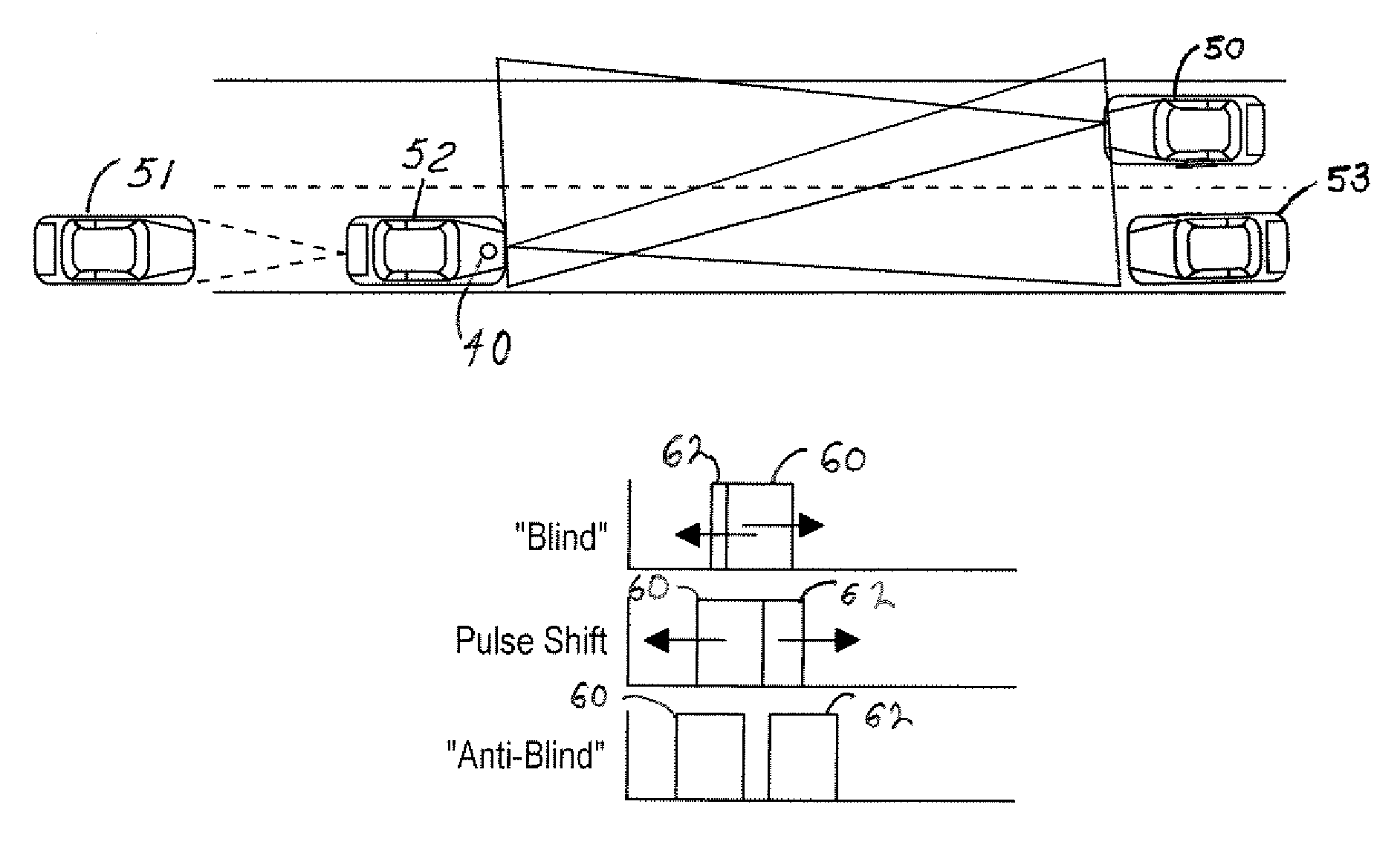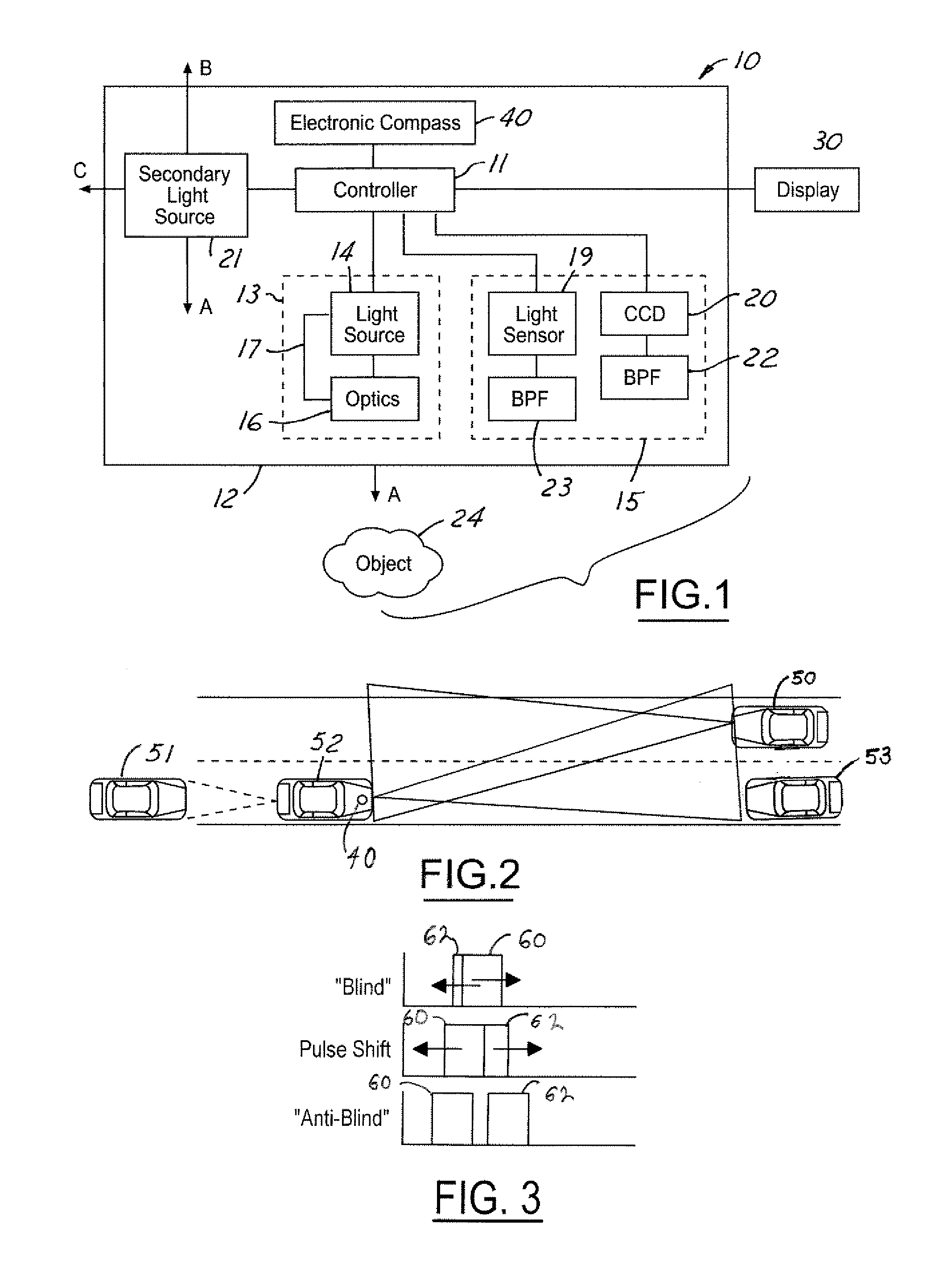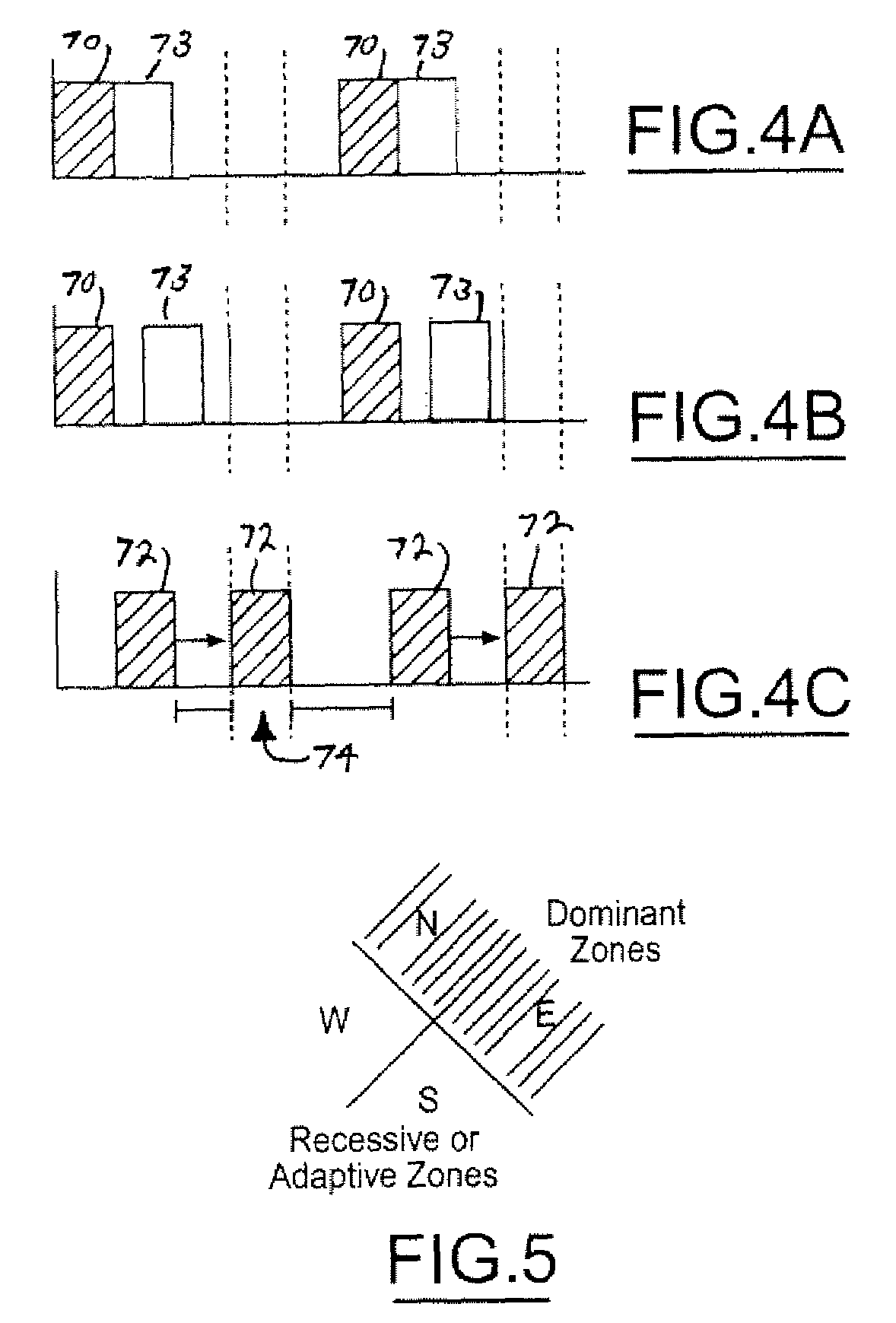Method of anti-blinding for active night vision system
a night vision system and active technology, applied in the field of night vision systems, can solve problems such as blindness in vision systems, and achieve the effect of mitigating the blinding effect of nearby
- Summary
- Abstract
- Description
- Claims
- Application Information
AI Technical Summary
Benefits of technology
Problems solved by technology
Method used
Image
Examples
first embodiment
[0039]Referring now to FIG. 3, there is shown an anti-blinding scheme illustrating the night vision signals for the vehicles 50, 52 of FIG. 2 in accordance with the present invention.
[0040]Illustrated are pulse phases 60 and 62 from the vehicle 52 and the vehicle 50. For the present embodiment, all vehicles are equipped with NV systems.
[0041]The controller 11 of the vehicle 52 receives detected opposing IR light and shifts the pulse phase of that opposing light to the right. Resultantly, the pulse phase shifts in small increments until blinding is prevented. A controller within vehicle 50 may also shift opposing signals, thereby accelerating the process. Alternately, if the vehicle 51 is following the vehicle 52, and both are equipped with NV, the system modifies the pulse pattern in real-time, as was discussed above.
second embodiment
[0042]Referring now to FIGS. 4a, 4b, and 4c, there is shown an anti-blinding scheme illustrating the night vision signals for the vehicles 50, 52 of FIG. 2 in accordance with the present invention.
[0043]Illustrated in FIG. 4(a) are dominant pulse phases 70 from vehicle 50 and dominant pulse phases 73 from vehicle 53 traveling alongside vehicle 50. Illustrated in FIG. 4(b) are shifted pulse phases 70 and 73. Illustrated in FIG. 4(c) are pulse phases 72 from adaptive vehicle 52 shifted into an optimized position to avoid blinding. For illustration, all vehicles are equipped with NV systems, and the vehicle 52 further includes an electronic compass 40.
[0044]The compass 40 is broken into zones, e.g. N (315–45 deg), E (45–135 deg), S (135–225 deg), and W (225–315 deg). This generates four zones where half are deemed dominant, their pulse pattern will be the signal that the other adaptive zones will use to modify their pulse pattern to avoid blinding or pulse overlap.
[0045]For a dominant ...
PUM
 Login to View More
Login to View More Abstract
Description
Claims
Application Information
 Login to View More
Login to View More - R&D
- Intellectual Property
- Life Sciences
- Materials
- Tech Scout
- Unparalleled Data Quality
- Higher Quality Content
- 60% Fewer Hallucinations
Browse by: Latest US Patents, China's latest patents, Technical Efficacy Thesaurus, Application Domain, Technology Topic, Popular Technical Reports.
© 2025 PatSnap. All rights reserved.Legal|Privacy policy|Modern Slavery Act Transparency Statement|Sitemap|About US| Contact US: help@patsnap.com



